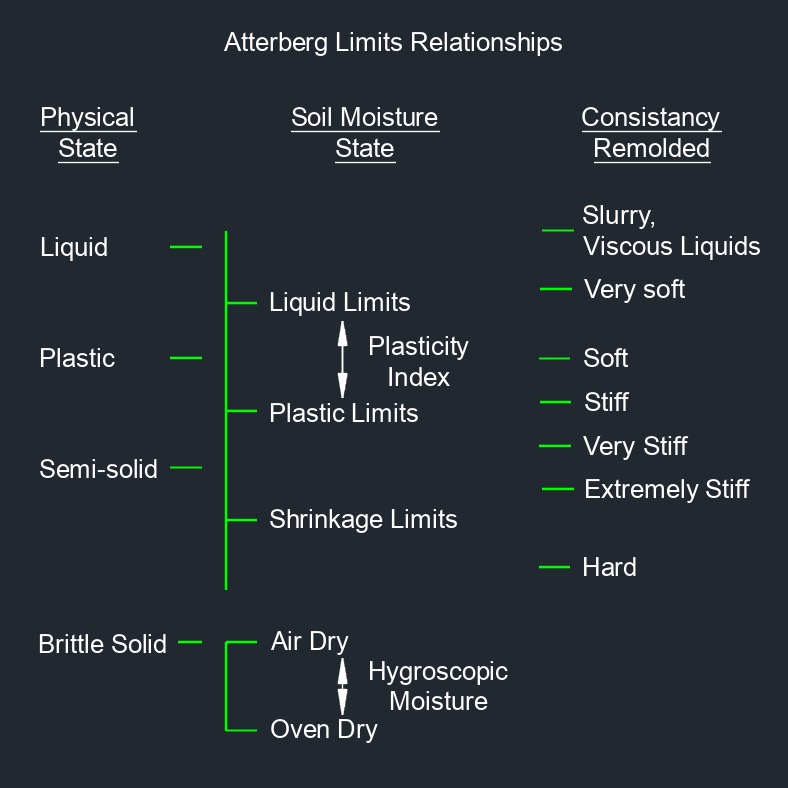Plastic Limit
Plastic Index Formula |
||
|
\( PI \;=\; LL - PL \) (Plastic Index) \( LL \;=\; PI + PL \) \( PL \;=\; LL - PI \) |
||
| Symbol | English | Metric |
| \( PI \) = Plastic Index | \(dimensionless\) | \(dimensionless\) |
| \( LL \) = Liquid Limit | \(dimensionless\) | \(dimensionless\) |
| \( PL \) = Plastic Limit | \(dimensionless\) | \(dimensionless\) |
 Plasticity limit, abbreviated as PL, also called plastic Index, a dimensionless number, is a property of soils and is a fundamental parameter used in geotechnical engineering and soil mechanics. It refers to the water content at which a soil transitions from a plastic state to a semi-solid state. It is one of the important parameters used to classify and characterize soils.
Plasticity limit, abbreviated as PL, also called plastic Index, a dimensionless number, is a property of soils and is a fundamental parameter used in geotechnical engineering and soil mechanics. It refers to the water content at which a soil transitions from a plastic state to a semi-solid state. It is one of the important parameters used to classify and characterize soils.
When soil is mixed with water, it can exhibit various states, ranging from solid to liquid, with plasticity being an intermediate state. The plastic limit is the boundary between the plastic and semi-solid states. At this water content, the soil has just enough moisture to be moldable and can be rolled into a thread about 3 mm in diameter without breaking. If the water content is reduced below the plastic limit, the soil becomes too dry and crumbly to be molded.
The plastic limit is determined through laboratory testing using standardized procedures. It is an essential property to assess the engineering behavior of soils, especially for activities such as construction and foundation design. The plastic limit, along with other parameters like the liquid limit and plasticity index, helps classify soils into different categories, such as clay, silt, and sand, which have distinct engineering properties.

